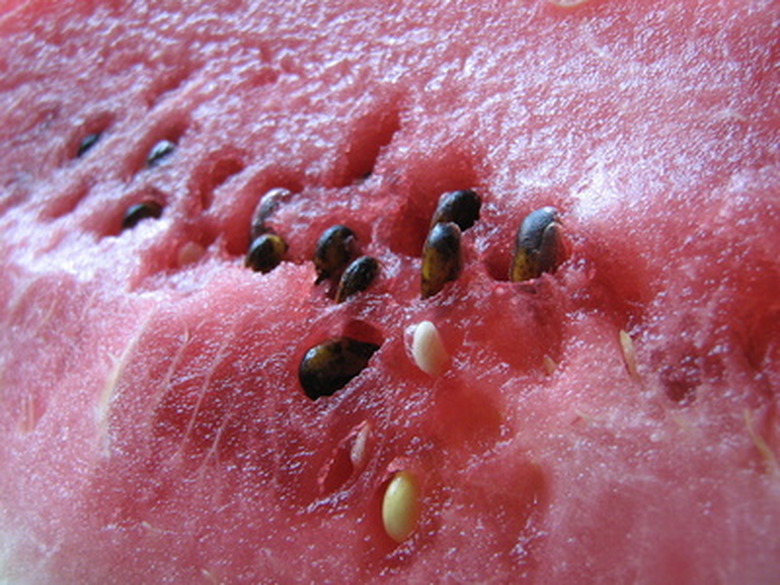Procedure For The Extraction Of Oil From Watermelon Seeds
Watermelon seed oil is most valued for high amounts of oleic and linoleic fatty acids, as well as other acids in amounts comparable to the composition of pumpkin seed oil. Watermelon seed oil is primarily used for cosmetics, where its stable shelf life, light texture and moisturizing properties make it a suitable emollient. The oil can be extracted using one of multiple possible methods but most require common cleaning and preparation steps.
Preparation
Watermelon seeds must be removed from the watermelon fruit and, depending upon the process, usually extracted from the seed casing. The seed must then be dried. Generally, the seed should have a moisture content around 10 percent. Seed that is too moist may result in a low oil yield, clogged equipment or mold enough.
- Watermelon seed oil is most valued for high amounts of oleic and linoleic fatty acids, as well as other acids in amounts comparable to the composition of pumpkin seed oil.
- Watermelon seeds must be removed from the watermelon fruit and, depending upon the process, usually extracted from the seed casing.
Oil Expellers
The oil expeller method consists of a rotating screw inside a capped horizontal cylinder. The screw forces the seeds through the cylinder, crushing them, and the oil is eventually allowed to escape through small holes or slots. The seed may be heated with some combination of friction and a heater. Expeller presses can either be found in a single cylinder press style or a traditional cage-style screw press. The two styles expel seed meal differently.
Cold Pressing
Although heated seeds yield more oil than cold seed, cold pressing maintains the greatest amount of nutrients possible. Cold pressing is a type of expeller pressing that takes place in an environment with temperatures kept below 120 degrees Fahrenheit. Cold presses can range from a traditional mortar and pestle to a ram press or more complicated device.
- The oil expeller method consists of a rotating screw inside a capped horizontal cylinder.
- Although heated seeds yield more oil than cold seed, cold pressing maintains the greatest amount of nutrients possible.
Solvent Extraction
Solvent extraction methods use a solvent, like hexane, to react with seeds at high temperatures, releasing oil. Further chemical treatment follows. This extraction method is most suitable for large commercial production and applications that require an especially long shelf life.
Clarification
The oil clarification process removes contaminants like water, resins and fine pulp. The oil can be clarified by settling for a few days and then having the top layer removed. If necessary, the oil can be filtered through a fine cloth. Finally, the oil can be heated to remove traces of water and destroy bacteria.
- Solvent extraction methods use a solvent, like hexane, to react with seeds at high temperatures, releasing oil.
- Finally, the oil can be heated to remove traces of water and destroy bacteria.
References
- Nutraceutical and Specialty Lipids and Their Co-products; Fereidoon Shahidi; 2006
- Simple Food for Busy Families: The Whole Life Nutrition Approach; Jeannette Bessinger and Tracee Yablon-Brenner; 2009
- Journal of the American Oil Chemists' Society; Characteristics and Composition of Melon and Grape Seed Oils and Cakes; Basil S. Kamel, H. Dawson and Y. Kakuda; May 1985
